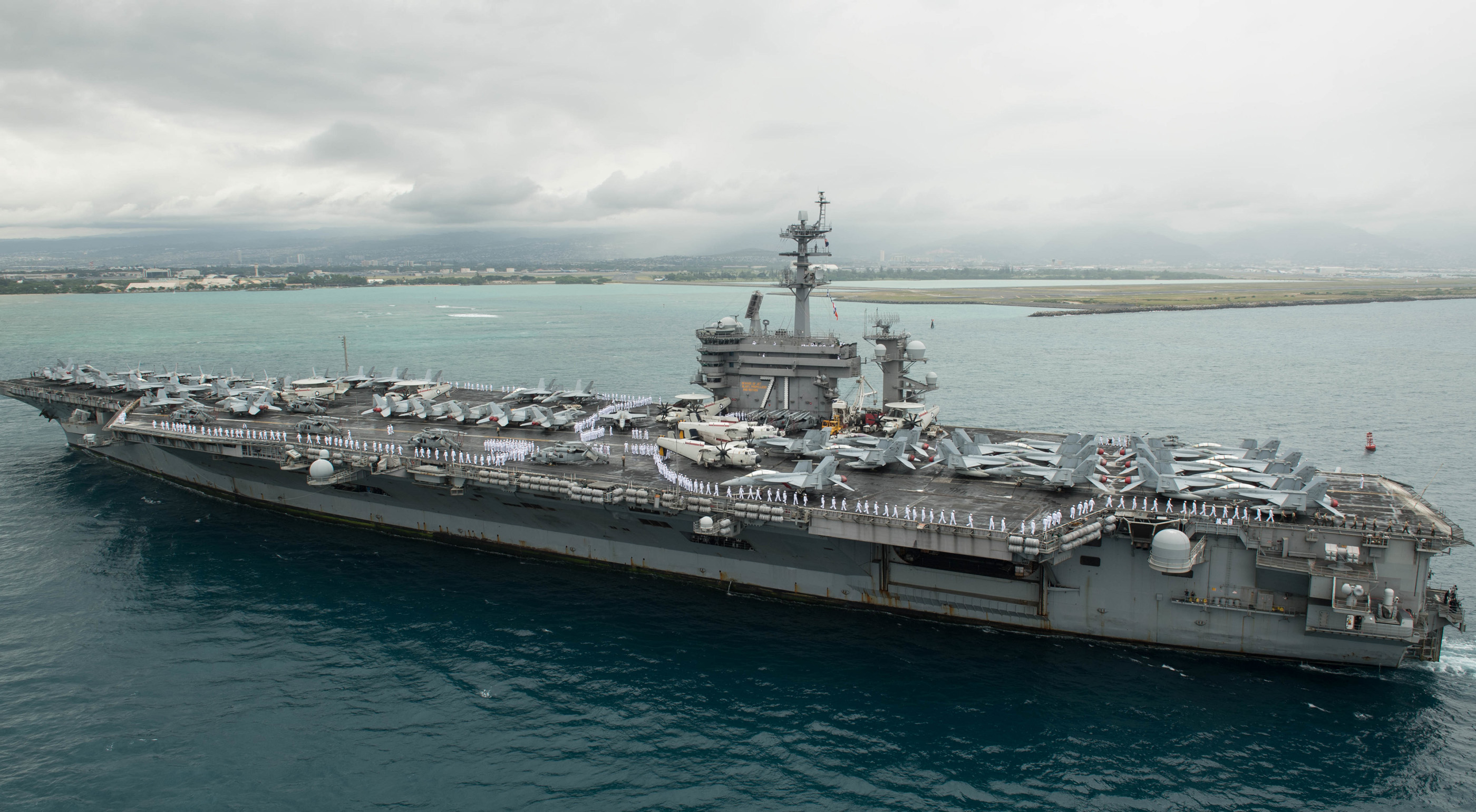'Sailors do not need to die': Captain of aircraft carrier asks for help with onboard COVID-19 outbreak

The captain of a nuclear aircraft carrier docked near Guam has written a letter begging the Navy for help as at least 100 Sailors have become ill with COVID-19.
The San Francisco Chronicle acquired the letter, which was written Monday by Capt. Brett Crozier aboard the aircraft carrier Theodore Roosevelt. Within the letter, Crozier outlines the impossibility of social distancing aboard an aircraft carrier, with its shared bathroom facilities, berths and dining facilities.
"The spread of the disease is ongoing and accelerating," he wrote. Noting the urgency of the situation, Crozier also wrote, "We are not at war. Sailors do not need to die. If we do not act now, we are failing to properly take care of our most trusted asset — our Sailors."
Four thousand crew members are aboard the ship, and only a handful of ill individuals have been evacuated to Guam, the Chronicle reported. To stop the spread of COVID-19 and prevent deaths, Crozier wrote, it is necessary to evacuate all but a skeleton crew from the ship and to find safe, isolated places for potentially exposed Sailors to quarantine.
Related: Q&A: Expat quarantined in China shares how to survive 8 weeks
Crozier wrote in the letter that the only shoreside facilities available for housing evacuated Sailors do not meet requirements for social distancing or quarantine: They consist of gymnasium-like spaces with cots where sick and well Sailors can't be separated while they wait out the 14-day quarantine period.
"Although marginally better than a warship, group quarantine sites are not a solution and are not in accordance with current guidance," Crozier wrote.
Sign up for the Live Science daily newsletter now
Get the world’s most fascinating discoveries delivered straight to your inbox.
At least 10% of the crew will need to remain aboard the Theodore Roosevelt, Crozier wrote, to run the nuclear reactor that powers the ship, to sanitize cabins and corridors, and to maintain security and respond to emergencies.
Related: 13 Coronavirus myths busted by science
In response, Acting Naval Secretary Thomas Modly told CNN that the Navy is working with Guam to find a solution.
"The problem is that Guam doesn't have enough beds right now, and we're having to talk to the government there to see if we can get some hotel space, create tent-type facilities," Modly said, according to The Chronicle.
Coronavirus science and news
- Coronavirus: Live updates
- What are coronavirus symptoms?
- How deadly is the new coronavirus?
- How long does coronavirus last on surfaces?
- Is there a cure for COVID-19?
- How does coronavirus compare with seasonal flu?
- How does the coronavirus spread?
- Can people spread the coronavirus after they recover?
Originally published on Live Science.
The one-month trial gives you access to all of the educational site's 9,000 activities in reading, science, math and art. Keep your child busy and learning while we are all stuck indoors.

Stephanie Pappas is a contributing writer for Live Science, covering topics ranging from geoscience to archaeology to the human brain and behavior. She was previously a senior writer for Live Science but is now a freelancer based in Denver, Colorado, and regularly contributes to Scientific American and The Monitor, the monthly magazine of the American Psychological Association. Stephanie received a bachelor's degree in psychology from the University of South Carolina and a graduate certificate in science communication from the University of California, Santa Cruz.










